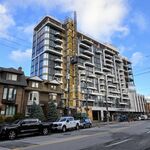nfitz
Superstar
That's crush capacity, not capacity used for planning service. You can't design a very frequent service based on crush capacity, because the delay with everyone trying to squeeze in and out of the trains extends the dwell time, so you can't achieve 90 second frequency. To obtain the ultimate capacity at 90-second frequencies, you have to use the 600 number. You can observe a case study on this at the Line 1 Bloor platform every day!REM's maximum design capacity is 780. https://rem.info/en/news/rem-seating-and-capacity
780 will work fine at 5 minute intervals, and probably (barely) at 2.5 minute intervals. But travel times will be quicker if they can get it to 600 maximum rather than 780.
That's good to hear. Aren't the current platforms 76.2 metres (250 feet) for 4 cars? Is it possible that they were futureproofed for 114.3 metres (for 6 cars)?An engineering friend on the projet told me that underground stations were indeed built with 100m platforms for futurproofing.
Yes, that's an interesting experiment. Similar in some ways of how 407 got built so fast, with the 20-year construction timeframe under the NDP collapsing to 2-3 (more) years once it was privatized. Though in the long-term it's lead to astronomical tolls of over 56 ¢/km at rush hour - compared to 30 ¢/km on the extension owned and built by the government. It will be interesting to see how people feel about this line, and the fares, 20 years from now. Hopefully the contract is better written than the one the conservatives did when they sold the 407!The only reason Montreal is getting new transit build quickly is because it's the CPDQi that runs the show exclusively. Hence why the government is even giving new projects directly to the CDPQi and not the ARTM, which is its official mandate.
Last edited:




